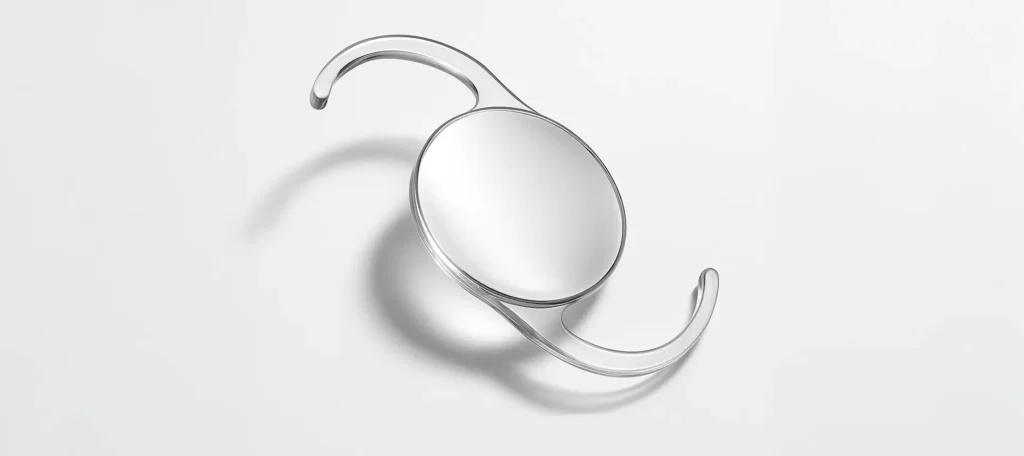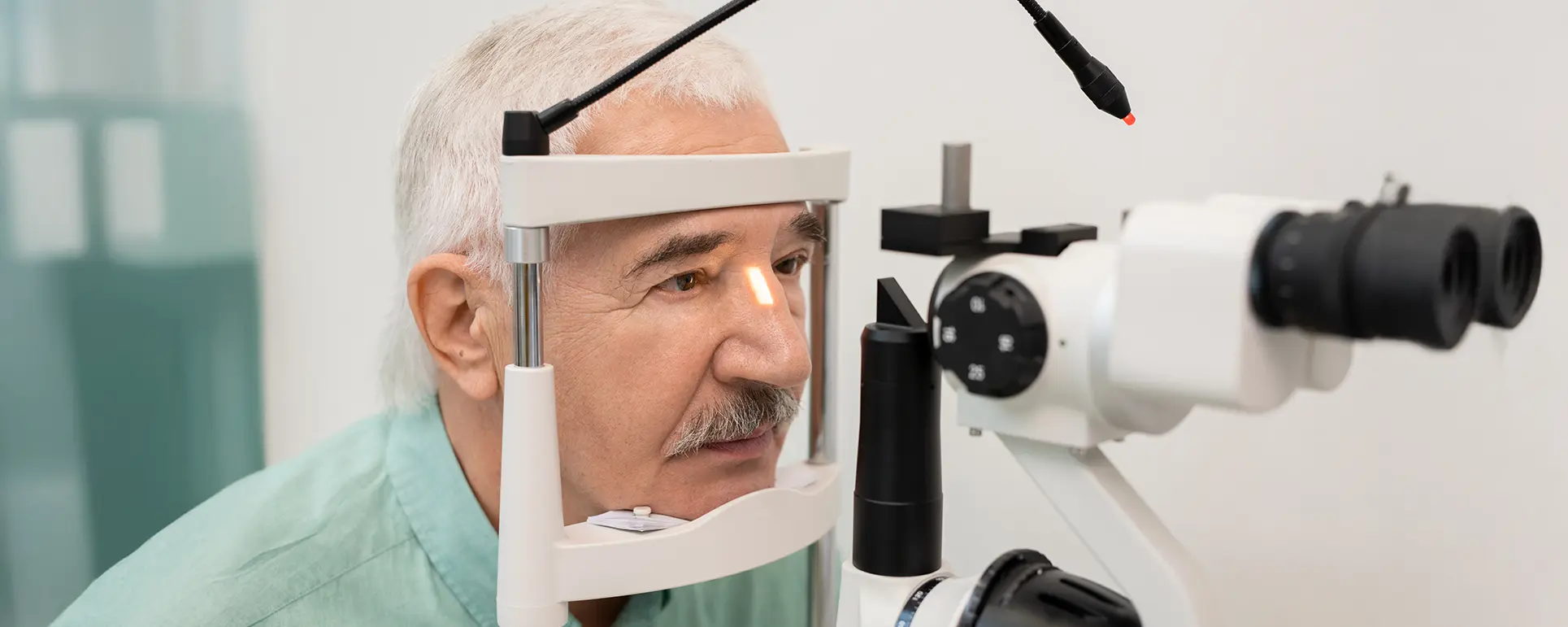If you’ve been told you need cataract surgery, one of the first things you’ll discover is that not all replacement lenses are the same. Your surgeon might mention Johnson & Johnson’s Tecnis range of intraocular lenses (IOLs), and naturally, the question arises: are they good lenses? This isn’t a small decision—you’ll be living with this lens for the rest of your life—so it’s worth looking at what J&J lenses offer, how they compare to other brands, and whether they might be a fit for you.
In this article, I’ll walk you through the main Johnson & Johnson Tecnis lenses, from the enhanced monofocal Eyhance to the premium Synergy and Toric designs. We’ll look at what surgeons like about them, what patients can expect, and where these lenses shine compared with the competition. The goal is to give you clarity so you can have a more informed conversation with your eye surgeon.
Why Johnson & Johnson Vision Is a Trusted Name
A long history in eye care
Johnson & Johnson Vision isn’t a newcomer. With decades of experience in eye health, their Tecnis range is one of the most widely used families of IOLs globally. Surgeons often prefer lenses with proven track records, and Tecnis lenses have been tested in countless clinical settings, which adds to their reliability.
Consistency across the range
The Tecnis family isn’t just one product but a whole platform of lenses built on the same foundation. That means whether you choose a monofocal Eyhance, a presbyopia-correcting Synergy, or a Toric lens to correct astigmatism, you’re still getting the same high-quality material, stability, and optical reliability. This consistency helps surgeons feel confident no matter which model they’re implanting.
Designed with surgeons in mind
Lenses aren’t just about how they perform once inside the eye—they’re also about how easy they are to handle during surgery. Johnson & Johnson provides preloaded injector systems that make surgery smoother, which reduces risks during the operation and contributes to better outcomes overall.
The Tecnis Eyhance: A Smarter Monofocal

The Tecnis Eyhance is often called an “enhanced monofocal” lens. Unlike a standard monofocal, which gives sharp vision at one fixed distance (usually far), the Eyhance is designed to extend your depth of vision a little further.
Surgeons like it because it’s not a big leap into multifocal territory. Patients who want better intermediate vision—for instance, for using a computer or cooking—without dealing with halos or glare often find it appealing. However, you’ll still likely need reading glasses for close tasks like looking at your phone or reading a book.
In short, Eyhance gives you a little more range than a basic monofocal, while staying simple and predictable.
The Tecnis Synergy: Full Range Vision
If you want to be less dependent on glasses, the Synergy lens is Johnson & Johnson’s flagship presbyopia-correcting option. It combines elements of multifocal and extended depth-of-focus technology, aiming to give you clear vision at all distances: near, intermediate, and far.
The Synergy has been designed to minimise some of the issues traditional multifocal lenses face, such as reduced contrast or strong halos around lights. That said, it’s still a complex optical design, which means some patients may notice night-time visual disturbances. The key benefit is that you’ll probably need glasses much less often, especially for reading.
Toric Options for Astigmatism

If you have astigmatism, you’ll need a lens that corrects that cylinder error at the same time as your cataract. Johnson & Johnson offers Toric versions across its range—including Eyhance Toric and Synergy Toric—so you can enjoy the benefits of the lens design while also correcting astigmatism.
Toric lenses must be positioned precisely to work correctly, but the Tecnis platform is well known for its rotational stability, which helps the lens stay in place after surgery. This stability is one of the reasons surgeons continue to use the Tecnis Toric line confidently.
Comparing J&J Lenses with Other Brands
When comparing brands, you’ll hear names like Alcon (PanOptix, Vivity), Zeiss (AT LISA, CT ASPHINA), and Bausch + Lomb (Crystalens, enVista). Each has its strengths, and the truth is, there isn’t a single “best” lens for everyone.
- Alcon PanOptix is one of the most popular trifocal lenses worldwide but may cause more noticeable halos in some patients compared with Synergy.
- Alcon Vivity offers extended depth of focus, much like Eyhance but with a slightly different design philosophy.
- Zeiss trifocals are praised for sharp vision but can be more sensitive to surgical alignment.
What Johnson & Johnson has going for it is the breadth of the Tecnis line, which allows surgeons to choose a lens tailored to each patient’s lifestyle, while staying within a trusted material platform.
Key Benefits of Choosing a J&J Lens
- A strong track record of optical performance.
- Options for every level of visual need—from simple monofocal clarity to near-complete spectacle independence.
- Toric designs that provide reliable astigmatism correction.
- Advanced material design that resists glistenings and maintains clarity over time.
- Widely used worldwide, meaning a lot of surgeon familiarity.
Possible Limitations
No lens is perfect, and Tecnis is no exception. Some of the things to keep in mind:
- The Synergy lens, while excellent for near and intermediate vision, can produce halos and glare, especially in the first few weeks or months after surgery.
- The Eyhance lens gives better intermediate vision than a basic monofocal, but it doesn’t replace reading glasses.
- Premium lenses require precise surgery and accurate measurements to deliver their best results.
FAQs: Johnson & Johnson Cataract Lenses
1. What makes Johnson & Johnson Tecnis lenses different from standard cataract lenses?
Johnson & Johnson’s Tecnis lenses stand out because they are designed with advanced aspheric optics that reduce visual imperfections and improve contrast sensitivity, particularly in low light. Unlike older monofocal lenses, they aim to deliver sharper, more natural vision and fewer issues with spherical aberration. They also come in a wide range of designs, including monofocal, enhanced monofocal, multifocal, extended depth-of-focus, and toric, which allows surgeons to tailor the lens choice to each patient’s lifestyle and visual goals, making the Tecnis line one of the most versatile and trusted families worldwide.
2. Are Tecnis Eyhance lenses a good choice if I don’t want multifocal optics?
Yes, the Tecnis Eyhance is considered an “enhanced monofocal” lens and is designed to give excellent distance vision with a useful boost for intermediate activities like computer use, bridging the gap between standard monofocals and multifocals. It’s a good option for patients who don’t want the potential side effects of diffractive optics, such as halos and glare, but still want a wider range of vision. While you’ll still need glasses for close-up tasks like reading, most patients find Eyhance provides a practical balance of clarity and convenience, and many surgeons recommend it as a safe, predictable choice.
3. Do Tecnis Synergy lenses really reduce dependence on glasses?
The Tecnis Synergy lens is designed to cover the full visual range—near, intermediate, and distance—and can greatly reduce or even eliminate the need for glasses in everyday life. Patients often report being able to read, use digital devices, and see clearly in the distance without spectacles, which is why the lens appeals to those seeking near-total independence. However, like other multifocal-style lenses, Synergy can produce halos or glare at night, though many people adapt with time, and it remains an excellent option for those prioritising spectacle freedom.
4. How well do Tecnis Toric lenses correct astigmatism?
Tecnis Toric lenses, including Eyhance Toric and Synergy Toric, are specifically designed to address astigmatism and are known for their rotational stability, which is vital for effective correction. Once accurately positioned, they usually remain stable inside the eye, helping patients achieve clearer, sharper vision than they would with a non-toric lens. For patients with moderate to high astigmatism, these lenses can dramatically reduce or even eliminate the need for glasses for distance activities, though achieving this depends on precise surgical measurements and careful lens alignment.
5. How do Johnson & Johnson lenses compare with Alcon and Zeiss lenses?
Alcon, Zeiss, and Johnson & Johnson all make highly regarded IOLs, and the best choice depends on individual needs. Alcon PanOptix, for example, is a leading trifocal lens but may cause more halos, while Alcon Vivity offers extended depth of focus similar to Eyhance but with a slightly different optical profile. Zeiss lenses are prized for their optical sharpness but can be more sensitive to surgical alignment. Johnson & Johnson’s Tecnis range stands out for its breadth, covering everything from enhanced monofocals to presbyopia-correcting lenses, all built on the same trusted material platform, giving surgeons flexibility while maintaining consistency.
6. Are Johnson & Johnson lenses suitable for every cataract patient?
Not all patients are candidates for premium Tecnis designs like Eyhance or Synergy, as certain eye conditions such as macular degeneration, corneal irregularities, or dry eye disease may limit their effectiveness. In such cases, a standard monofocal Tecnis lens might be more appropriate because it avoids the potential side effects of complex optics. This is why pre-surgical assessment is critical, allowing your surgeon to match the lens not only to your visual goals but also to your underlying eye health, ensuring the safest and most effective outcome.
7. Will a Tecnis lens last a lifetime once implanted?
Yes, Johnson & Johnson’s Tecnis lenses are made from durable hydrophobic acrylic materials designed to remain stable inside the eye for life. Once implanted, they are not expected to degrade or wear out, which means you should only ever need one cataract surgery per eye. This permanent solution is one of the key reasons cataract surgery is so transformative, as it both restores vision and provides a lasting improvement, with millions of people worldwide already living with Tecnis lenses implanted successfully.
8. Do Johnson & Johnson lenses increase the risk of visual side effects?
Tecnis monofocal and Eyhance lenses are associated with very low rates of visual side effects like halos and glare, offering excellent clarity with minimal compromises. More complex designs, such as Synergy, can cause halos, glare, or starbursts, particularly noticeable at night, but these are well-documented trade-offs for greater spectacle independence. Many patients adapt to these effects over time, and surgeons carefully select candidates and set expectations beforehand to reduce the likelihood of dissatisfaction, ensuring patients understand both the benefits and possible drawbacks.
9. How important is surgeon experience when choosing a Tecnis lens?
Surgeon expertise is crucial for getting the best out of any Tecnis lens, especially premium ones. Accurate biometry, precise surgical technique, and correct alignment are key to unlocking the full benefits of advanced optics, and even small errors can compromise results. Fortunately, the Tecnis platform is widely used and familiar to many ophthalmologists, which adds a layer of predictability, but selecting a surgeon with significant experience in premium IOL implantation will give you the greatest confidence in achieving your desired visual outcomes.
10. How do I decide if a Johnson & Johnson lens is right for me?
The decision depends on your lifestyle, visual priorities, and medical suitability, which is why a detailed discussion with your surgeon is essential. If you want reliable distance vision with some intermediate benefit, Eyhance could be a good fit; if you want maximum spectacle independence, Synergy might suit you; and if you have astigmatism, a toric model could provide the clearest results. By weighing your daily activities, expectations, and eye health, your surgeon can recommend the best Tecnis option—or another lens entirely—to help you achieve the most satisfying long-term outcome.
Final Thoughts
So, is a Johnson & Johnson cataract lens good? The short answer is yes—Tecnis lenses are among the most respected and widely used worldwide, with options that suit a wide range of patient needs. The real question isn’t whether they’re good, but whether the specific Tecnis lens recommended for you matches your visual priorities, lifestyle, and eye health.
If you’re considering cataract surgery, the best step is to have a detailed discussion with your surgeon about your daily activities and visual expectations. That way, they can match you with the right lens—whether it’s Eyhance, Synergy, or another option entirely.
At London Cataract Centre, we regularly help patients navigate these choices. The right lens can make a lifelong difference, and we believe it’s worth taking the time to get it right.
References
European Ophthalmology Times. (2021) Evaluation of an enhanced monofocal intraocular lens. Available at: https://europe.ophthalmologytimes.com/view/evaluation-of-an-enhanced-monofocal-intraocular-lens (Accessed: 8 October 2025).
Assil Eye Institute. (2023) Tecnis Synergy IOL. Available at: https://assileye.com/library/tecnis-synergy-iol (Accessed: 8 October 2025).
Best Cataract Surgeons. (2024) Eyhance lens implant IOL review. Available at: https://bestcataractsurgeons.com/eyhance-lens-implant-iol-review (Accessed: 8 October 2025).
Best Cataract Surgeons. (2024) Synergy intraocular lens (IOL) implant. Available at: https://bestcataractsurgeons.com/synergy-intraocular-lens-iol-implant (Accessed: 8 October 2025).
PubMed Central. (2023) Visual outcomes of an enhanced monofocal intraocular lens. Available at: https://pmc.ncbi.nlm.nih.gov/articles/PMC10152560 (Accessed: 8 October 2025).

